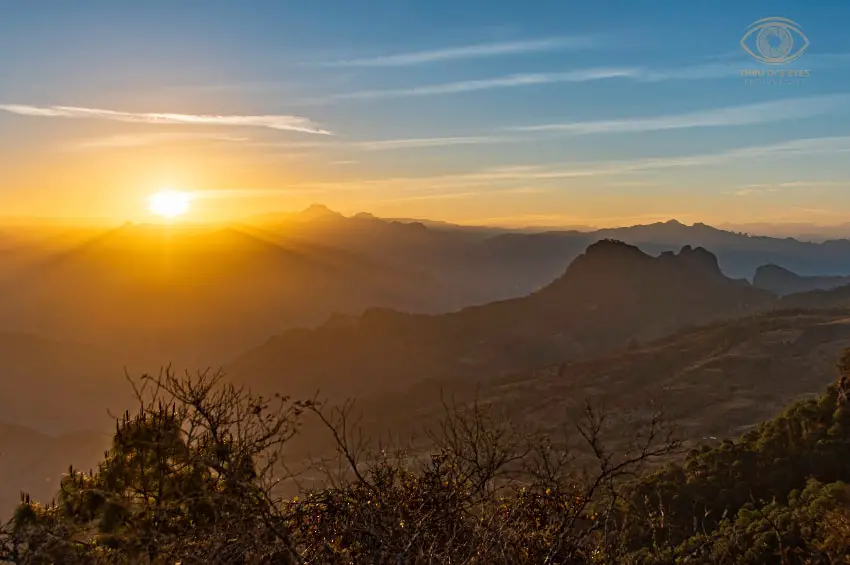The whole world is talking about the two upcoming solar eclipses, and the first place in the world to view one in totality will be in Mazatlán, Mexico. On April 8, 2024, at 9:46 a.m., the city will plunge into complete darkness for 4 minutes and 27 seconds!
Astronomers worldwide will descend on the port city, including those from NASA, UNAM, France, Japan, Jordan, and the Netherlands. The total eclipse show will begin at 9:51 a.m. and will last nearly three hours. If you’re looking at the calendar, you’ll see this will all occur on a Monday. But trust me — there’s no better way to start your week.

My family traveled to Nebraska to experience our first total eclipse in August of 2017 and it was life-changing!
We sat in a field of sunflowers on a clear, blue day. As the moon began to shield the sun and the sky started to darken, the insects began buzzing, just like at sunset – even though it was just before noon! The sunflowers started bowing their heads.
As the moon almost completely crossed over the sun, we saw the much-anticipated “diamond ring” – and is so much better in person than in a photo or video! Finally, the world went completely dark, cool and quiet. It is such an eerie sensation at midday!
Looking around, we could see the reds and yellows of sunset 360 degrees around the horizon. The insects went quiet, and the sunflowers faced the soil for the duration of the eclipse. Even our 21-year-old son, who knew what to expect, was gobsmacked by what he saw. After a few minutes, the sun reappeared, and the process reversed itself.
People travel across the planet to experience a solar eclipse because it is so remarkable that it’s almost addictive. Luckily, those of us in this piece of paradise will not have to go far. However, budding “eclipse chasers,” I urge you to make your plans now before lodging sells out. The next total solar eclipse visible from North America won’t be until 2044.
I am a founding member of the Mazatlán Astronomical Society (SAMAZ). While I am very far from an expert, many members of the Society are! In our weekly meetings, members teach people the science of astronomy, how to build telescopes, and how to view eclipses safely. We are also training volunteers to host viewings during both events.
SAMAZ’s annular eclipse event in October will be held at Mazatlán’s lighthouse, said to be the tallest naturally occurring lighthouse in the world. Next April, the Society will host viewings in Mazatlán at the lighthouse, the UNAM campus, and on the historic Olas Altas boardwalk. You can learn more about the society on their Facebook page. While you are in Mazatlán for the eclipse, you can enjoy the incredible fresh seafood, miles of gorgeous beaches, the colonial Centro Histórico with its unique tropical neoclassical architecture, artist galleries, a 7-km oceanside promenade, and the incredible views from its three oceanfront hills, beachside restaurants, bars and high rises.
Another great option is to travel into the Sierra Madre Occidental mountain range to view the eclipse under dark skies that are perfect for stargazing. Villagers in the small town (220 inhabitants) of Chirimoyos, 90 minutes from Mazatlán, have flattened out a viewing area they call “Mintaka Observatory.” At 1400 meters above sea level, it provides 360-degree views and over 100 kilometers of visibility.
Their community-directed rural tourism project offers camping space (50 pesos/person) with nearby bathrooms, rentals of rooms in local houses (600 pesos/3-4 people) or complete homes, home-cooked meals starting at 100 pesos, horseback riding for 200 pesos/hour and guides for hiking and birding (150/person for 5 people).
The area is breathtaking and is locally known as a sacred energy vortex. It’s a charming small town where you’ll find pre-hispanic areas, petroglyphs, beekeepers, farmers of ancestral corn and growers of garden flowers. Observatorio La Mintaka has unified the local community and brought in new revenue streams to an area in economic need while connecting residents in meaningful ways with their natural environment.
Near Chirimoyos and just an hour east of Mazatlán is the gorgeous, historic woodworking and mining town of Concordia. Founded in 1565, Concordia is regionally famous for its shaved ice. The beautiful San Sebastián church crowns the charming town square; colorful homes line its streets.
Do not miss the Callejón Nana Chon with its incredible street art, the namesake of a well-known local heroine of the second Franco-Mexican War. Concordia will host eclipse viewings as well. Nearby are hot springs and the Indigenous Mayo town of Jacobo.

Safely viewing a solar eclipse
You MUST use eclipse glasses, handheld solar viewers, or solar camera filters; NEVER look directly at the sun during an eclipse!
Ensure your viewers have ISO 12312-2:2015 certification. They should have the manufacturer’s name and address printed somewhere on the product and should not be scratched or damaged. During complete darkness (totality), you may remove the glasses, but as soon as the sun begins to peak out again, put them back on to watch the remainder of the eclipse.
Getting there
Mazatlán: Daily flights from most major Mexican cities.
Concordia: About an hour east from Mazatlán. Take Highway 15 south to Villa Unión and switch to the Highway 40 free road. Public buses are available.
Chirimoyos: About 90 minutes from Mazatlán. Take Highway 15 south to Villa Unión and switch to 40D, the toll road.
Dianne Hofner Saphiere is a photographer and interculturalist who has lived in Mazatlán since 2008. Her photographs can be found under “Thru Di’s Eyes” on FB, IG or her website, www.thrudiseyes.com. She also runs the expat website www.vidamaz.com.
